The Gramophone: A History
Take a couple of minutes to dive into the history of the gramophone, a device popular with collectors and which revives nostalgia for a time when music was a privilege.
The gramophone is one of the first devices that allowed pieces of music to be played mechanically on metal ‘phonographic’ discs. It stems from the cylinder phonograph designed by Thomas Edison in 1877.
It was the American engineer of German origin Émile Berliner who, in 1887, filed the patent for a process in which the Edison engraving at variable depth on a cylinder was replaced by an engraving with variable width. The device, which he called the gramophone (probably an approximate inversion of the word phonograph), is thus accompanied by a system of discs easier to produce industrially and more practical to store.
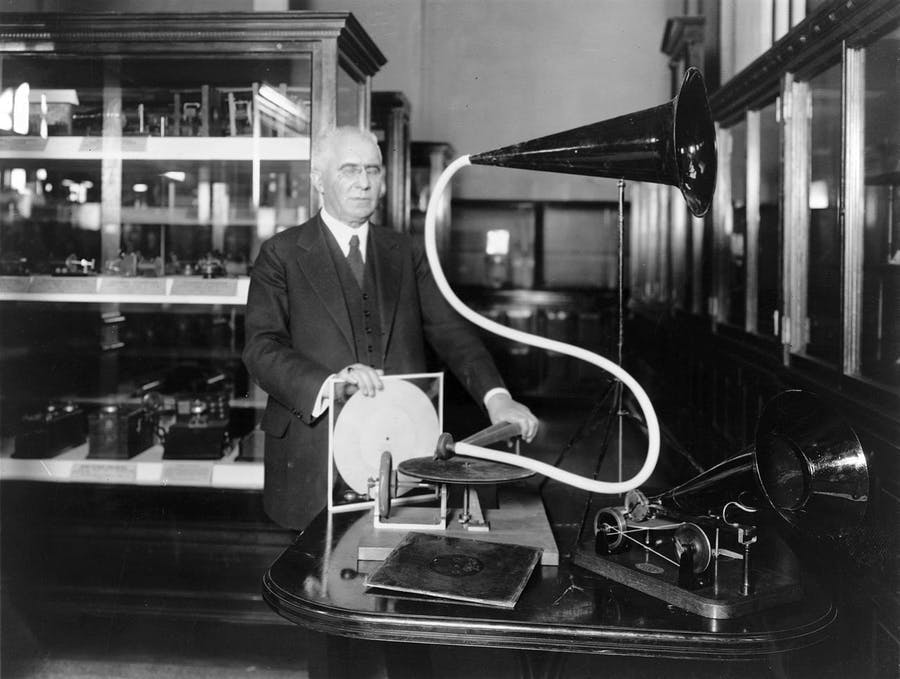
The name is originally a registered trademark but is replaced by the simple ‘phonograph’, a term which extends to all musical cylinder devices of the time.
Related: Globes: All Around the World
The gramophone, which replaced the phonograph at the turn of the 20th century, was later replaced by turntables and tape recorders. The gramophone's recording medium makes it possible to play records, which initially spun at 90 revolutions per minute. For the rotation of the discs, the apparatus was entirely mechanical. When it came to the reproduction of sound, it was equipped with a crank intended to tense the mainspring in only a few turns, an operation previously carried out by a key.
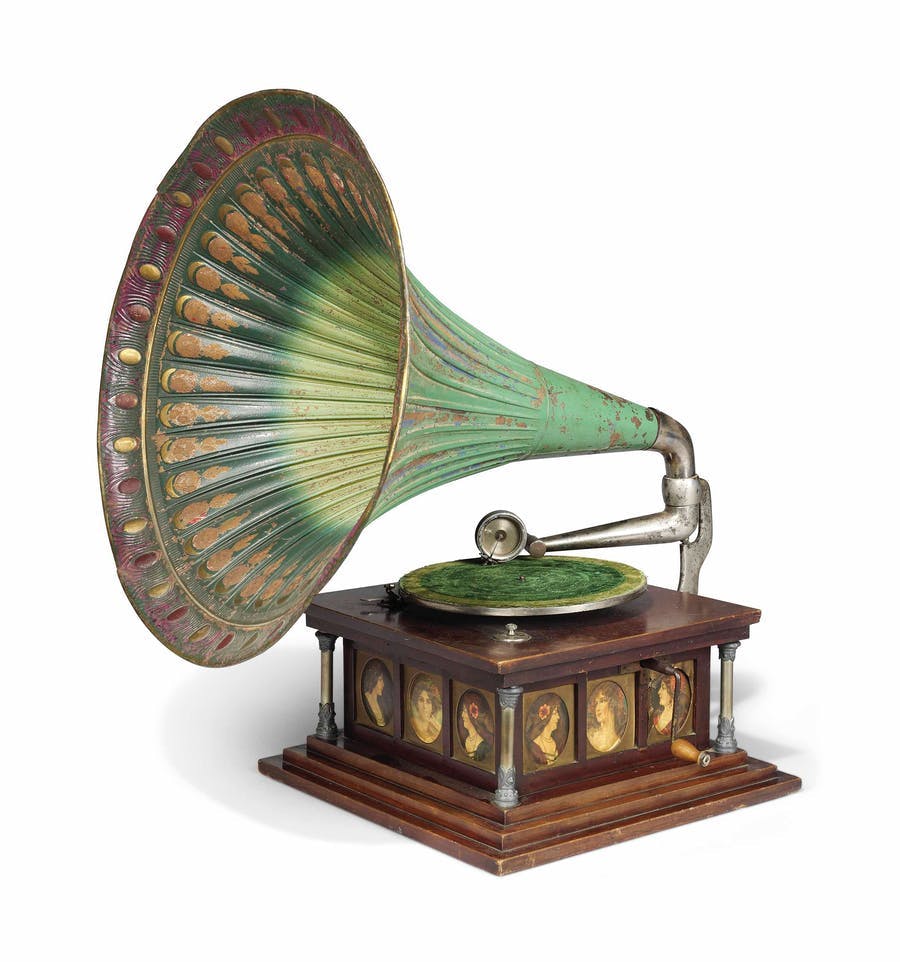
The first gramophones, like the ‘Victor V’, presented a conical device – a decorated sheet metal horn – for acoustic amplification. It was not until a little later, during the 1910s, that ‘phono-suitcases’ appeared. Their appearance changed completely as they were compressed in small suitcases or cases for easy transport. They were widely used during the First World War to distract soldiers at the front, taking the name ‘gramophone of the trenches’.
Related: Mirrors: A Reflection
The acoustic amplification of the phono-cases is provided by a conical cavity placed inside the case, the mouth of which is located between the top and the cover.
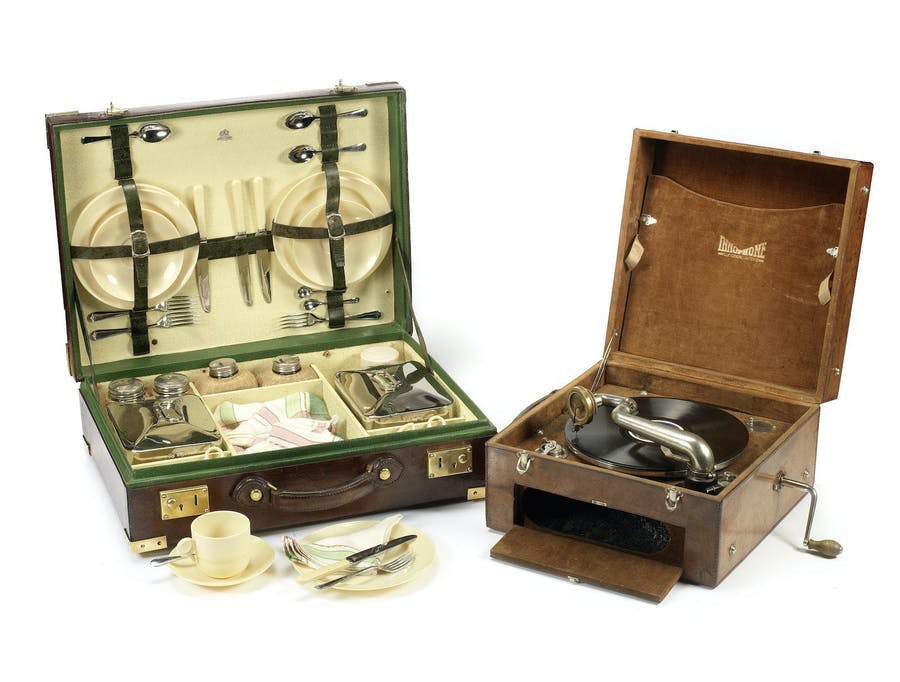
The ‘picnic gramophone’ was democratized in the mid-1920s by the rise of the automobile and family outings. Equipped with a compartment for storing several discs and a small receptacle for storing emergency needles, its cover also acts as a flag. The most common brands of phono-suitcases in France in the 1920s and ‘30s were ‘La Voix de son Maître’, ‘Pathé’, ‘Columbia’ and even ‘Salabert’.
Related: Snuff Bottles: Still up to Snuff
Gramophone-compatible discs feature a side etch on the surface, not a deep etch like on their ancestor the cylinder. They are read with a needle, which was a major innovation in the history of mechanical musical devices.
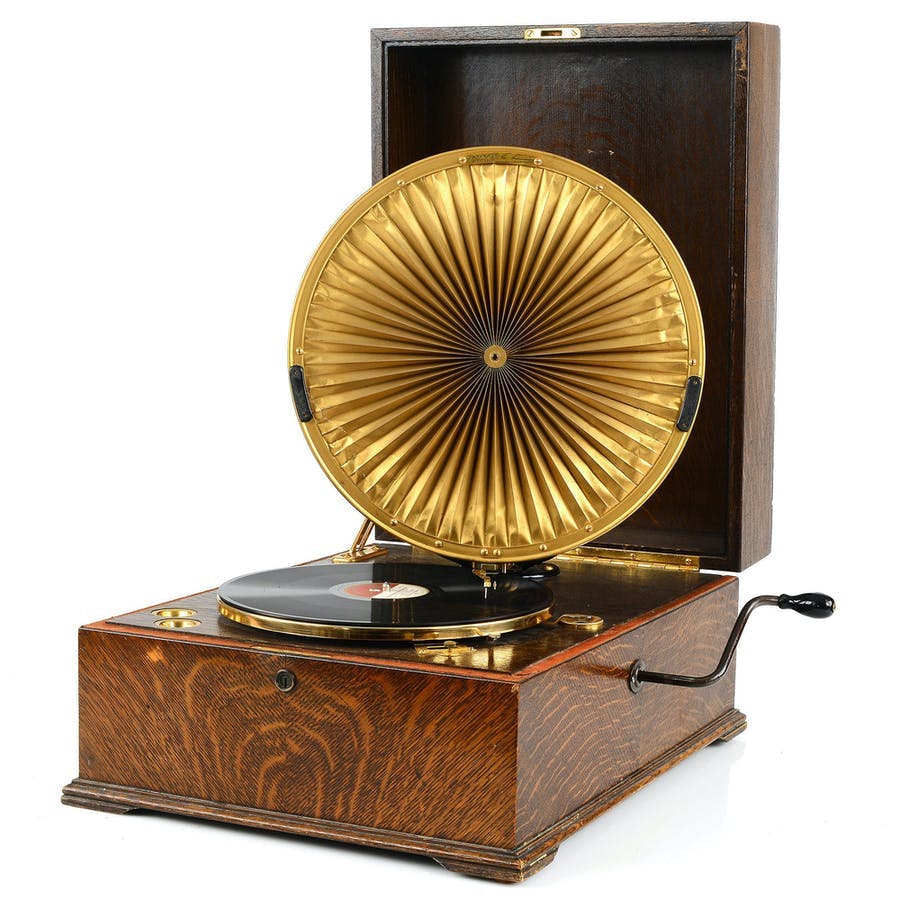
The image most commonly associated with the gramophone is undoubtedly that of the dog ‘Nipper’, the logo of the record company and brand His Master's Voice. While he was developing the gramophone, Émile Berliner already owned the ‘Gramophone Company’, which made old metal rolls and whose logo featured a small angel writing with a quill pen. Wishing for an even more eye-catching image for his discovery, Berliner asked his painter friend Francis Barraud to create a painting representing "purity and sound truth".
Barraud, a British artist, was far from suspecting he was to create his most famous work and the most famous logo in the music industry: a fox terrier named Nipper. The animal, present in the artist's studio during his research, loved listening to the gramophone pavilion and encountering the bizarre sounds that emerge from it. The artist told himself that Nipper reacted to the bursts of sound, as if he heard ‘The Voice of his Master’.
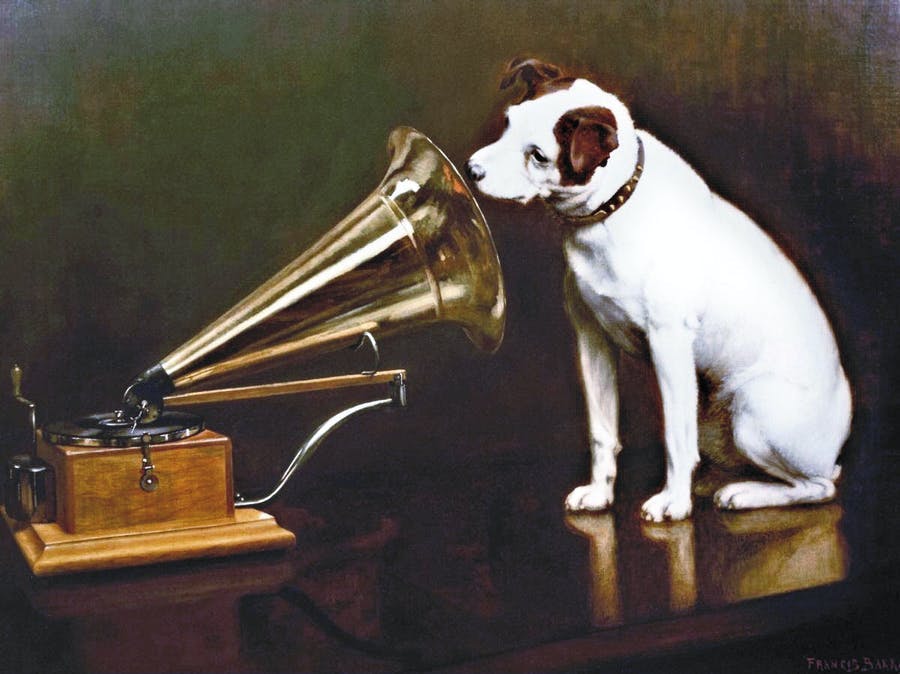
From there, the fate of the brand was sealed. The Nipper dog logo was printed on all gramophone records, along with the famous phrase ‘His Master's Voice’. Even today, theories about the real owner of the dog differ, some claim that Nipper was the artist's companion, while others suggest that it belonged to his brother, actor Marc Henri Barraud.
Related: The True Story of the Toucan Lamp
At auction, the very first copies of the gramophone sell for tens of thousands. This is particularly the case for the Kämmer & Reinhardt model dating from around 1890, which sold for €25,000 at Henry's Auktionshaus AG in 2016. The EMG, HMV (His Master's Voice) models and Edison's ‘Picturegram’ gramophones Bell (one of the first audio-visual devices that spun small children's discs while a scroll displaying pictures moved into another compartment), can reach tens of thousands at the higher end.
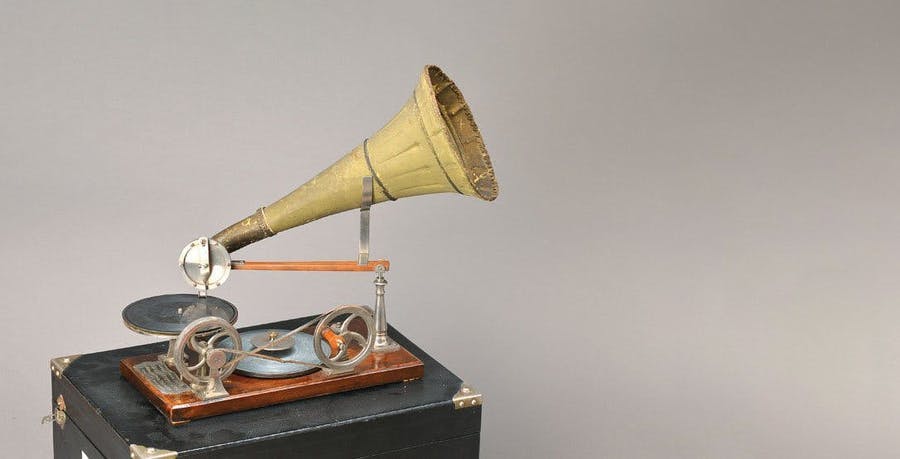
However, it is possible to find models at affordable prices: a real vintage gramophone in working order can sell for between $275 and $2,000. But, like most collectables, the gramophone market isn't immune to fakes. Specialists warn novice buyers against what they call ‘false-nographs’: reproductions for purely decorative purposes, or counterfeit old gramophones flanked by a logo of a famous brand of the time, such as Victor or HVM.
Related: The Amazing Art of Sagemono and Netsuke
The reproductions are recognizable by their standardized geometric shape, and are usually made from inexpensive media in varnished white wood and a brass-plated roof. Some, which have a beautiful old appearance and a good sound, can nevertheless be difficult to identify for a neophyte. Flea markets and online marketplaces can therefore present traps, but auction houses remain a safe bet for collectors and amateurs, as these gramophones will be authenticated by experts and offered at prices reflective of their state of conservation, date of manufacture, brand and operation.

While the record player has experienced a new boom in recent years and has been reissued in a modern version, the gramophone is a real collector's item that still appeals to many collectors and audiophiles for its aesthetics, its sound and its remarkable history.
If you have a gramophone that you want to have an expert appraised, we invite you to consult our online valuation service ValueMyStuff, which can offer an appraisal within 24 or 48 hours.


